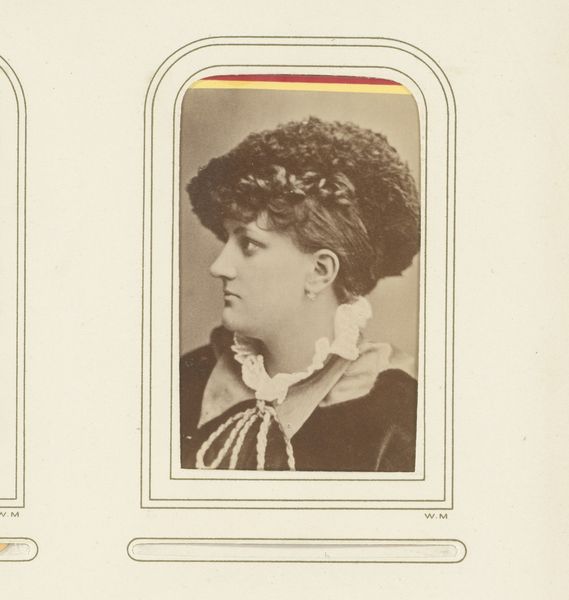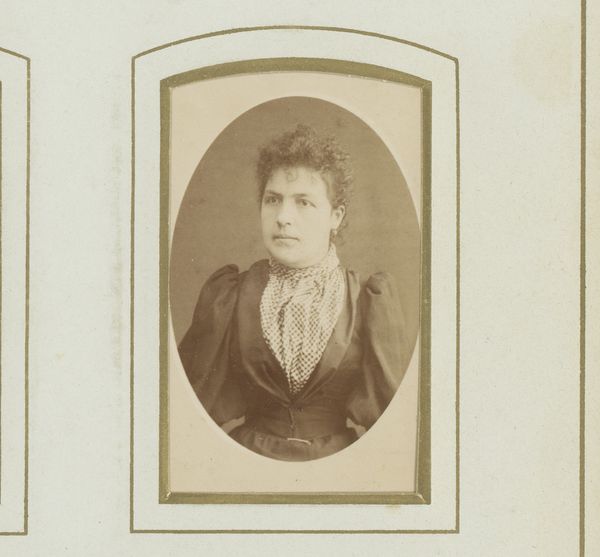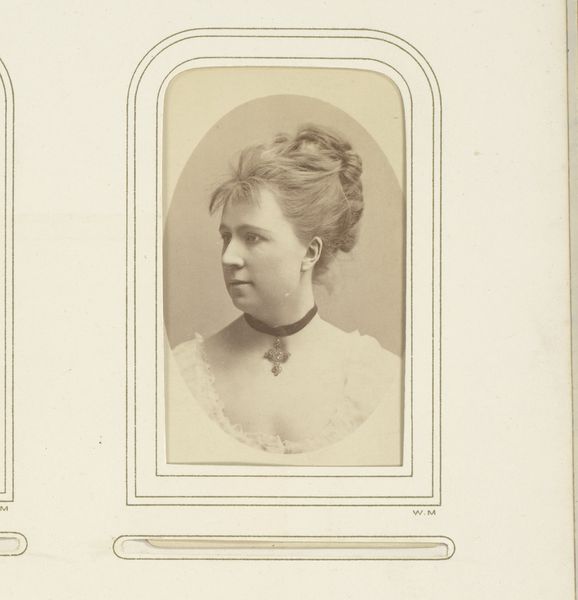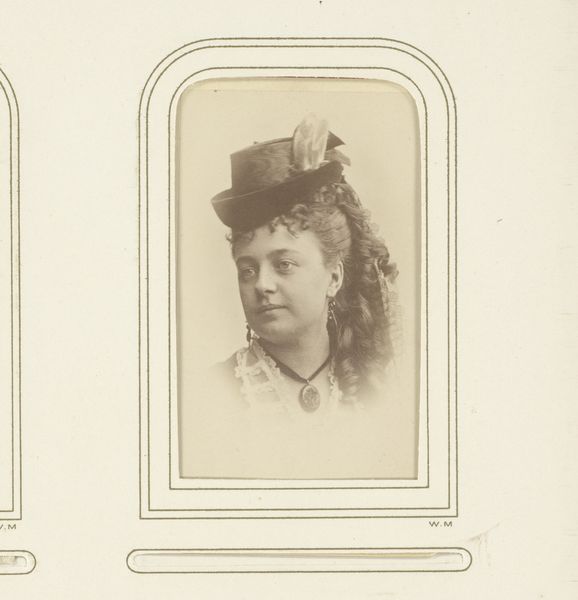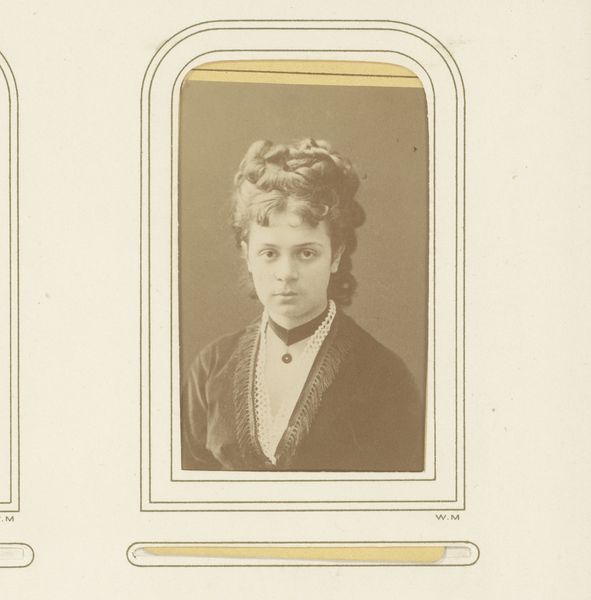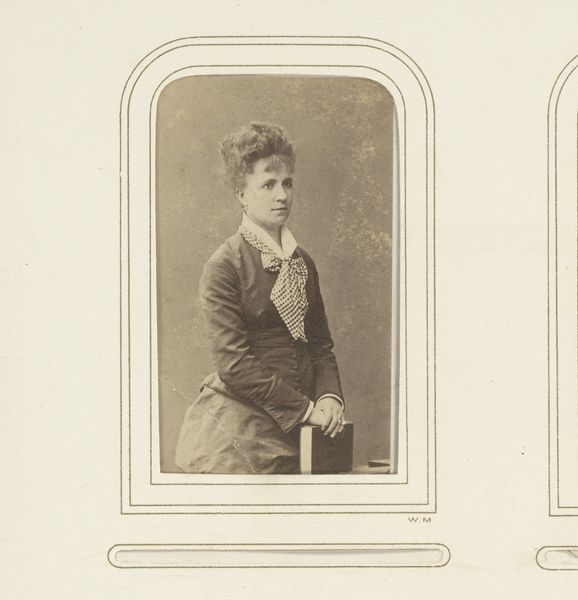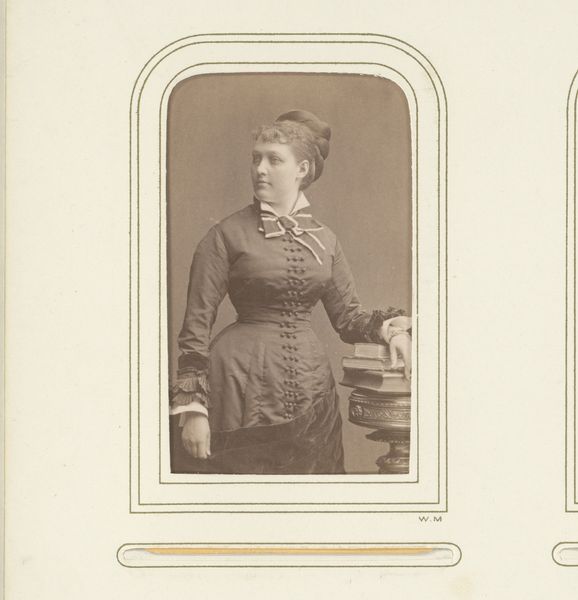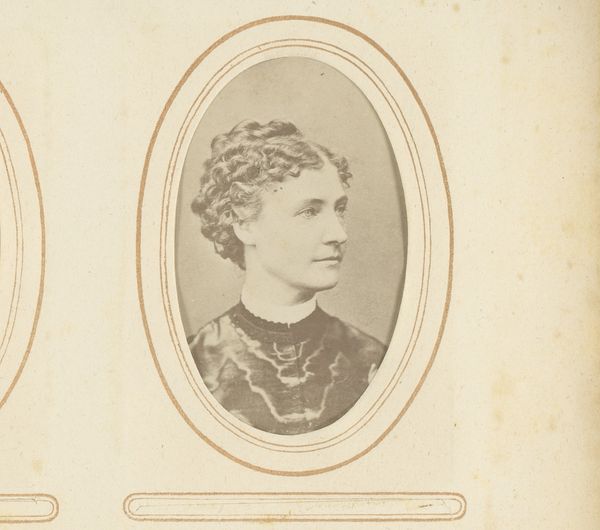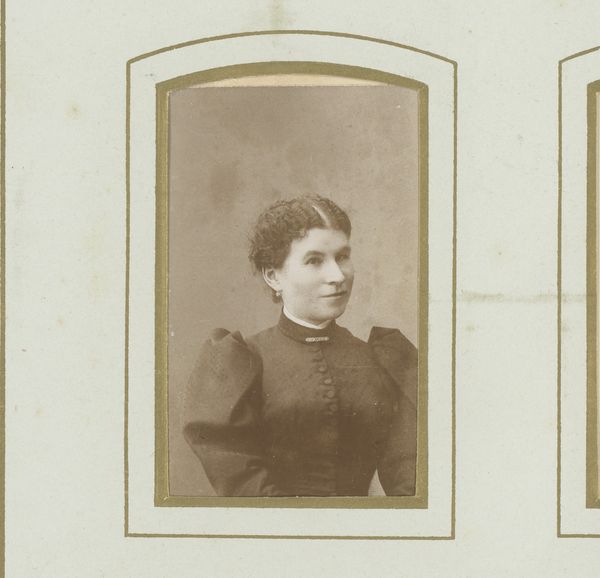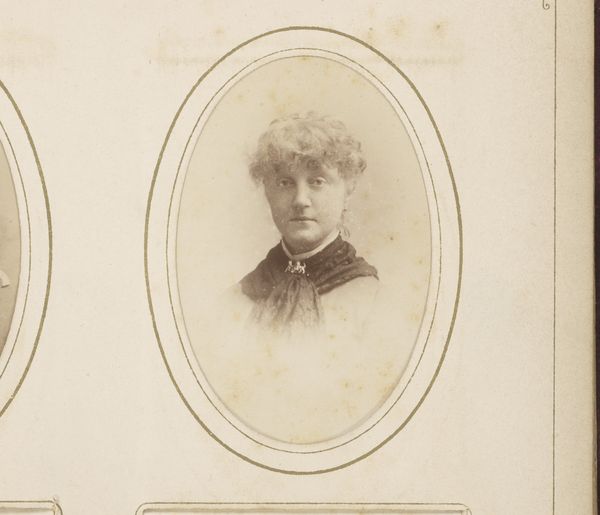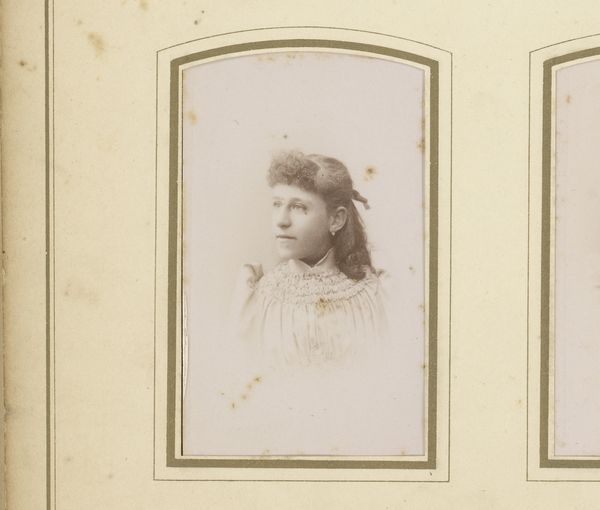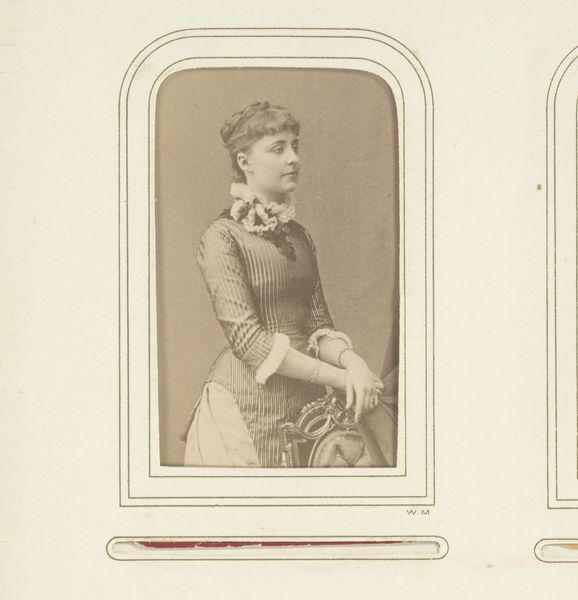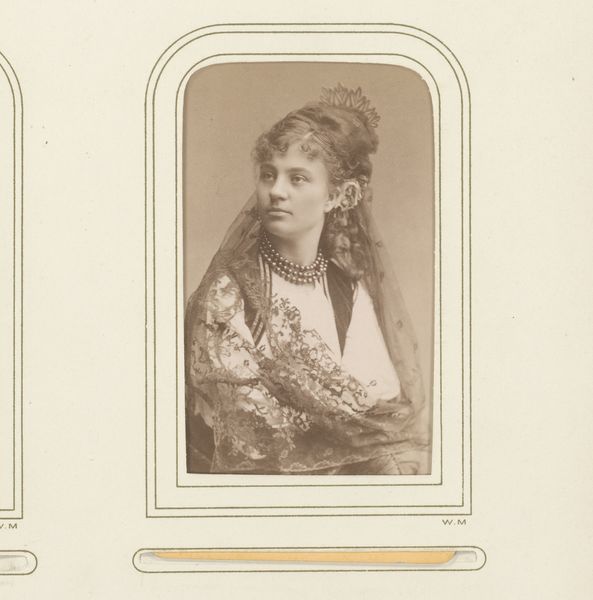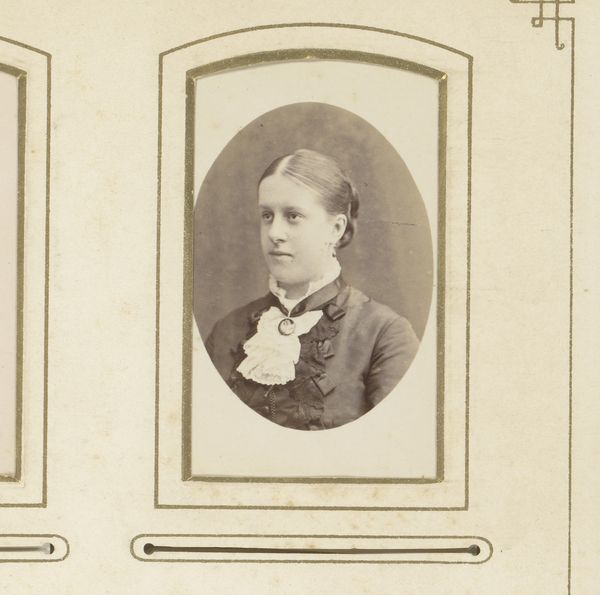
photography, albumen-print
#
portrait
#
photography
#
historical photography
#
albumen-print
Dimensions: height 85 mm, width 51 mm
Copyright: Rijks Museum: Open Domain
Editor: Here we have a photograph entitled "Portret van Zelia Trebelli-Bettini," created sometime between 1860 and 1875 by J. Johansson. It’s an albumen print. The first thing that strikes me is the texture – from the delicate feathers in her hat to the sheen on her jacket. How does the materiality of the albumen print affect our reading of the image? Curator: Well, the albumen print was a mass-produced photographic process, becoming a ubiquitous medium for portraiture amongst the rising middle class. The use of egg whites in the emulsion created a smooth, almost porcelain-like surface, a stark contrast to earlier photographic processes. Does the sitter’s clothing reflect similar aspirations of this rising middle class? Editor: Absolutely. Her hat with the feathers, the lace, even the cameo she’s wearing all suggest an attempt to display a certain status. I suppose the democratization of portraiture went hand-in-hand with the rise of consumer culture? Curator: Precisely! Think about the labor involved: the sourcing of albumen on a massive scale, the factories dedicated to card production for these photographs. What social relations do these objects speak to? These prints were often kept in albums, becoming intimate objects of exchange, further embedding themselves within the fabric of daily life and social ritual. It's no longer simply about an individual but a signifier for aspiration, available through industrialization. Editor: So the image isn’t just a representation of Zelia Trebelli-Bettini, but also a physical artifact embedded within the burgeoning industrial processes and consumerist culture of the time. I never thought about portraiture quite like that! Curator: Seeing how materials reflect wider processes demystifies our tendency to venerate only singular works of art.
Comments
No comments
Be the first to comment and join the conversation on the ultimate creative platform.
